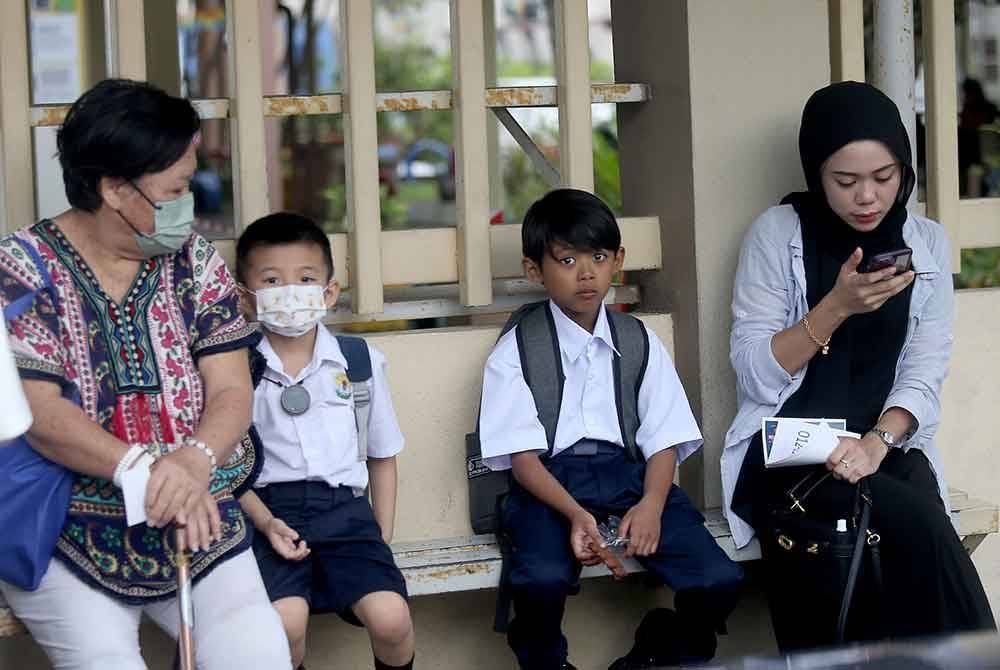The number of non-Chinese students attending Chinese National Type Schools (SJKC) has seen a significant increase over the years.
According to data from the Chinese School Committees Association, the Malaysian Chinese School Teachers Association (Dong Jiao Zong), and the Ministry of Education (MOE), non-Chinese enrolment in SJKC schools has risen from 17,309 students (3.05%) in 1989 to 101,011 students (19.75%) in 2020.
One of the reasons: Chinese language will offer better opportunities

Several factors contribute to the growing popularity of SJKC among non-Chinese parents. Many parents perceive SJKC schools to have superior education systems, better discipline, and high-quality teachers.
Additionally, they believe that proficiency in the Chinese language will offer their children better opportunities in the future. Proximity to home is another significant factor.
Currently, non-Chinese students, including Malays, Indians, Indigenous people, and foreigners, constitute about 20% of the total enrolment in SJKC schools nationwide, reported Sinar Harian.
Challenges faced by non-Chinese students

However, these students often face challenges in adapting to a new language and culture since Chinese is not their spoken language.
The headmaster of SJK (C) Cheng Ming Keningau Sabah, Chee Sui Fung, mentioned that despite difficulties in reading and writing, some non-Chinese parents do not transfer their children to other schools due to their familiarity with the SJKC environment.
Chee noted that some students transfer after a year, while others remain for several years.
Chee emphasised that the school works with parents to address learning progress issues, resorting to transfers only when no other options exist.
“Only when there is no other choice will parents decide to transfer their children.”
Similarly, Tai Nyit Wun, headmaster of SJKC Chung Hwa Kota Kinabalu, said that student replacement is around five percent annually, with some non-Chinese students transferring to national schools after discussions with parents.
“We encourage and advise but do not ask them to withdraw from school. After discussing with parents, we let them find a suitable school for their children,” he said.
Efforts to support non-Chinese students

Sang Cze Leong, principal of SJKC Peng Hwa, Kota Tinggi Johor, highlighted that the lack of a Mandarin-speaking environment at home slows students’ learning progress.
The school encourages parents to seek external help and has suggested starting Chinese language classes for parents, though the response has been minimal.
“I often encourage parents to seek external help and suggest starting Mandarin classes for parents at school. What I can say is the response and actions from parents are somewhat lukewarm.”
Before the abolition of the Primary School Achievement Test (UPSR), SJKC schools made efforts to ensure all students passed. After the UPSR’s abolition, students can follow their education without the pressure of a significant exam.
“But it does not mean that the school is indifferent. Honestly, the principal is in a dilemma. We cannot clearly tell parents for fear that they will misunderstand and think that we look down on them and want their children to transfer,” he said.
Some gave up on Chinese

However, Lei Kok Kien, headmaster of SJK (C) Chung Hien in Sarikei, Sarawak, mentioned that some non-Chinese students give up on Chinese due to its difficulty, retaining only basic conversational skills.
“As a result, their mastery level remains at the basic conversational level. Some of them are exposed to the Chinese language after graduation, and they still retain their dialect when using Mandarin.”
The school’s approach to aiding students includes repeated listening, speaking, reading, and writing exercises, along with classroom presentations. Non-Chinese students often switch to national schools if they move to areas without SJKC, though this is rare.
“Students are also arranged to make as many presentations as possible in class to train them,” he explained.
“The readiness of non-Chinese students to receive Chinese education is a source of pride for us because it demonstrates the importance of the Chinese language,” said Kok Kien.
He also emphasised that many Orang Asli in Sarawak can speak Chinese, and almost all bank employees there have a basic understanding of the language.
Meanwhile,, Yee Chon Moi, headmaster of SJK (C) Kampung Baru Paroi in Seremban, Negeri Sembilan, noted that non-Chinese students enjoy studying at SJKC.
Yee introduced the ‘I Learn Mandarin’ program for non-Chinese students in Grades One to Three, providing three months of free training before exams.



